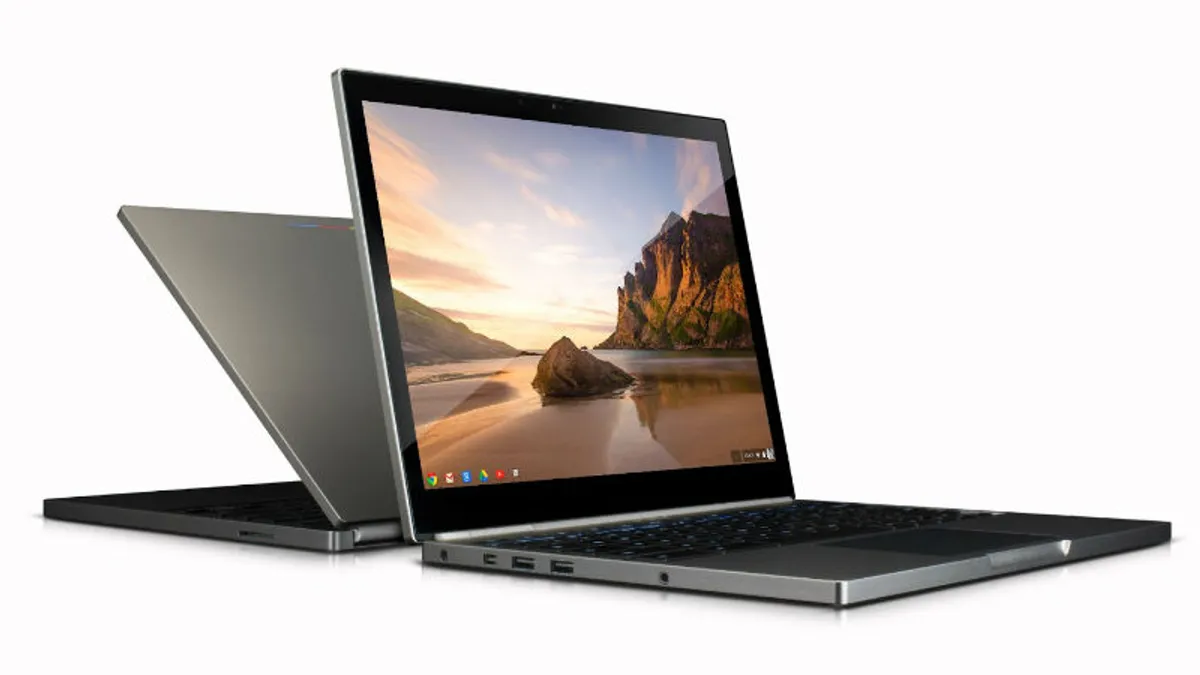Dive Brief:
- Texas’ Wichita Falls Independent School District experimented with Chromebooks last year, giving an entire classroom of kindergartners the devices and finding increased student engagement and better outcomes — especially for students with special needs.
- According to eSchool News, the Wichita Falls kindergarten teachers settled on a number of tools to facilitate the ed tech initiative, including Google Classroom and use of Ok Google, which they said was the most beneficial because students with a range of reading levels could use voice commands and all of them focused more intently on speech to be recognized by the computer.
- Besides the Chromebook’s built-in accessibility features, which helped immensely, Google Tone let teachers send sound-activated clickable pop-up links to students, Google Share to Classroom let them push websites to all student Chromebooks at once, Screen Castify let teachers record lessons for individual or groups of students, and Seesaw gave students a way to create digital portfolios.
Dive Insight:
While some districts experiment with earlier and earlier introduction of digital devices to the student curriculum, others have put a greater emphasis on hands-on learning absent technology for the youngest students. EdSource reported last week that four California school districts have welcomed the Book Trust to get students reading physical books and give them copies to take home.
Regardless of the method used to engage and teach students, pedagogy is the most important determinant of success. Many districts that have introduced digital devices have struggled to ensure students are using them actively, instead of passively receiving digital content. More traditional classrooms that feature a teacher at the front of the room lecturing while students take notes creates an equally passive experience for students. Whether there’s tech or not, this is the key area on which to focus.







 Dive Awards
Dive Awards





